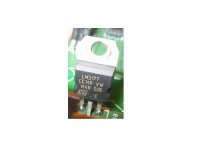What is the best way to cool audio receiver?
What make and model of receiver do you have that needs cooling?
This may seem silly, but why?
To follow this up, to cool it from what temperature to what temperature and what do you expect to achieve?
Best Regards,
TerryO
Other than Liquid Nitrogen People usually use Alluminium Heatsink \ rad .
You Might also want to consider heat pipes.....Depending how much heat you need to dissipate
You Might also want to consider heat pipes.....Depending how much heat you need to dissipate
aaHollywood:
I'm assuming you have a receiver that is running hotter than you believe it should. Some background for ya...Todays' electronics are rather designed not as they were not too long ago...cutting costs is paramount and corners seem to be cut nowadays. When individuals are designing components they really aren't doing much thermal analysis. To prove my point...if you have a Direct TV cable-box or some such video device (Usually ON 24/7)...walk right over to it right now and put your hand on the top of the case.....is it hot to the touch???
Chances are you can't hold your hand on the top for very long....really hot isn't it?
I have a VCR/DVD combo unit that went dead recently......I noticed the ample output of heat previously & I opened it up to find four cracked solder joints on the power supply section....as a result of heat.
There were a few devices that had NO heatsinks(Small aluminum "radiators").
I fixed the bad joints & added some heatsinks...no problems now.
The two picture shown here are one "Three pin device" and an appropriate heatsink for the "device". A lot of manufacturers delete heatsinks thinking "It will be fine, I'm under the rating". Devices are "rated" for how much power(Heat) they can handle...but the closer you get to that limit the shorter its lifespan.
Here in these forums we understand the 'dangers' of running too close to "limits" & design accordingly.
I'm making a lot of generalizations here but you get my point don't cha?
Tell us what unit do you have?
_________________________________________________Rick......
I'm assuming you have a receiver that is running hotter than you believe it should. Some background for ya...Todays' electronics are rather designed not as they were not too long ago...cutting costs is paramount and corners seem to be cut nowadays. When individuals are designing components they really aren't doing much thermal analysis. To prove my point...if you have a Direct TV cable-box or some such video device (Usually ON 24/7)...walk right over to it right now and put your hand on the top of the case.....is it hot to the touch???
Chances are you can't hold your hand on the top for very long....really hot isn't it?
I have a VCR/DVD combo unit that went dead recently......I noticed the ample output of heat previously & I opened it up to find four cracked solder joints on the power supply section....as a result of heat.
There were a few devices that had NO heatsinks(Small aluminum "radiators").
I fixed the bad joints & added some heatsinks...no problems now.
The two picture shown here are one "Three pin device" and an appropriate heatsink for the "device". A lot of manufacturers delete heatsinks thinking "It will be fine, I'm under the rating". Devices are "rated" for how much power(Heat) they can handle...but the closer you get to that limit the shorter its lifespan.
Here in these forums we understand the 'dangers' of running too close to "limits" & design accordingly.
I'm making a lot of generalizations here but you get my point don't cha?
Tell us what unit do you have?
_________________________________________________Rick......
Attachments
- Status
- Not open for further replies.

